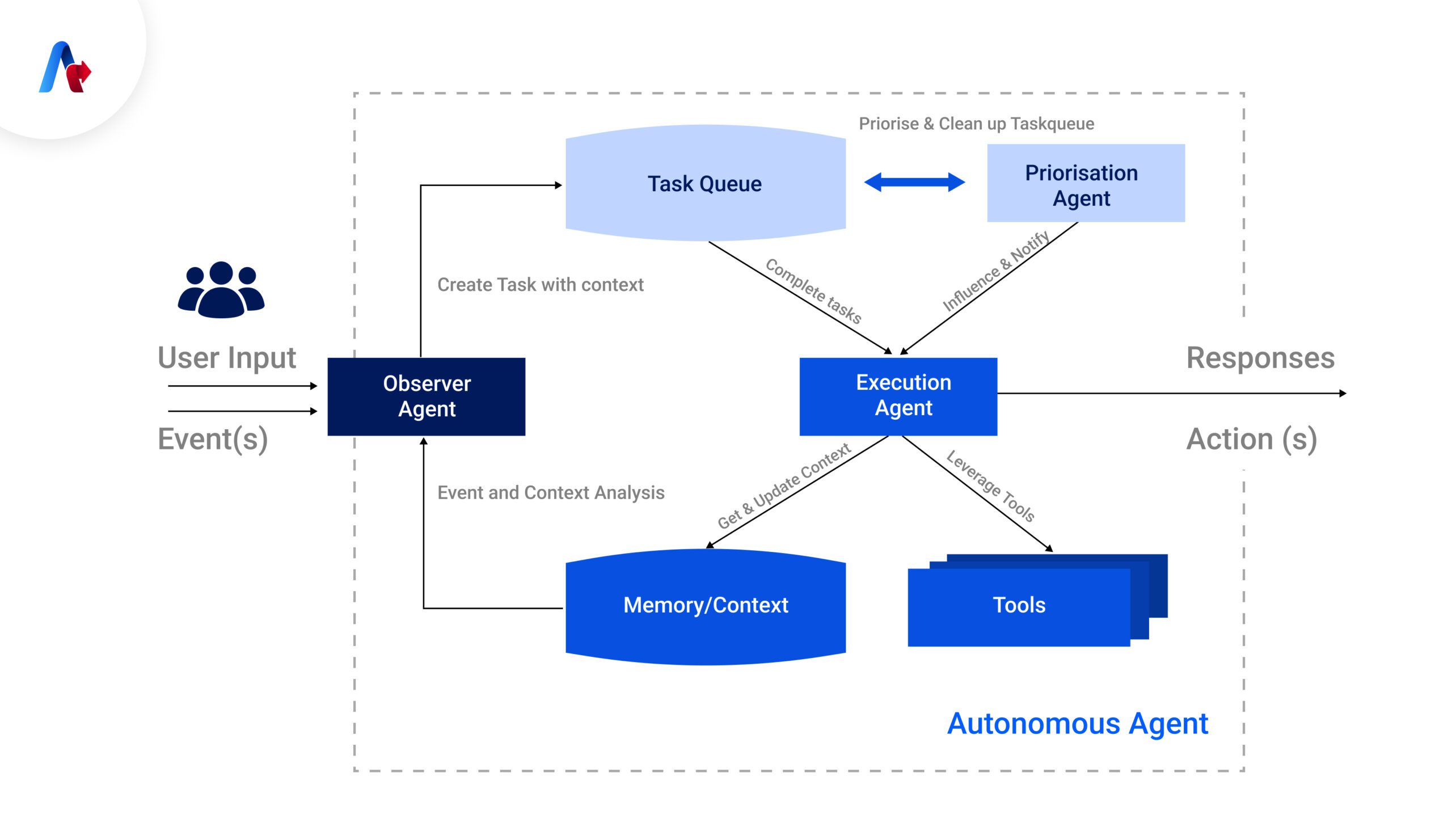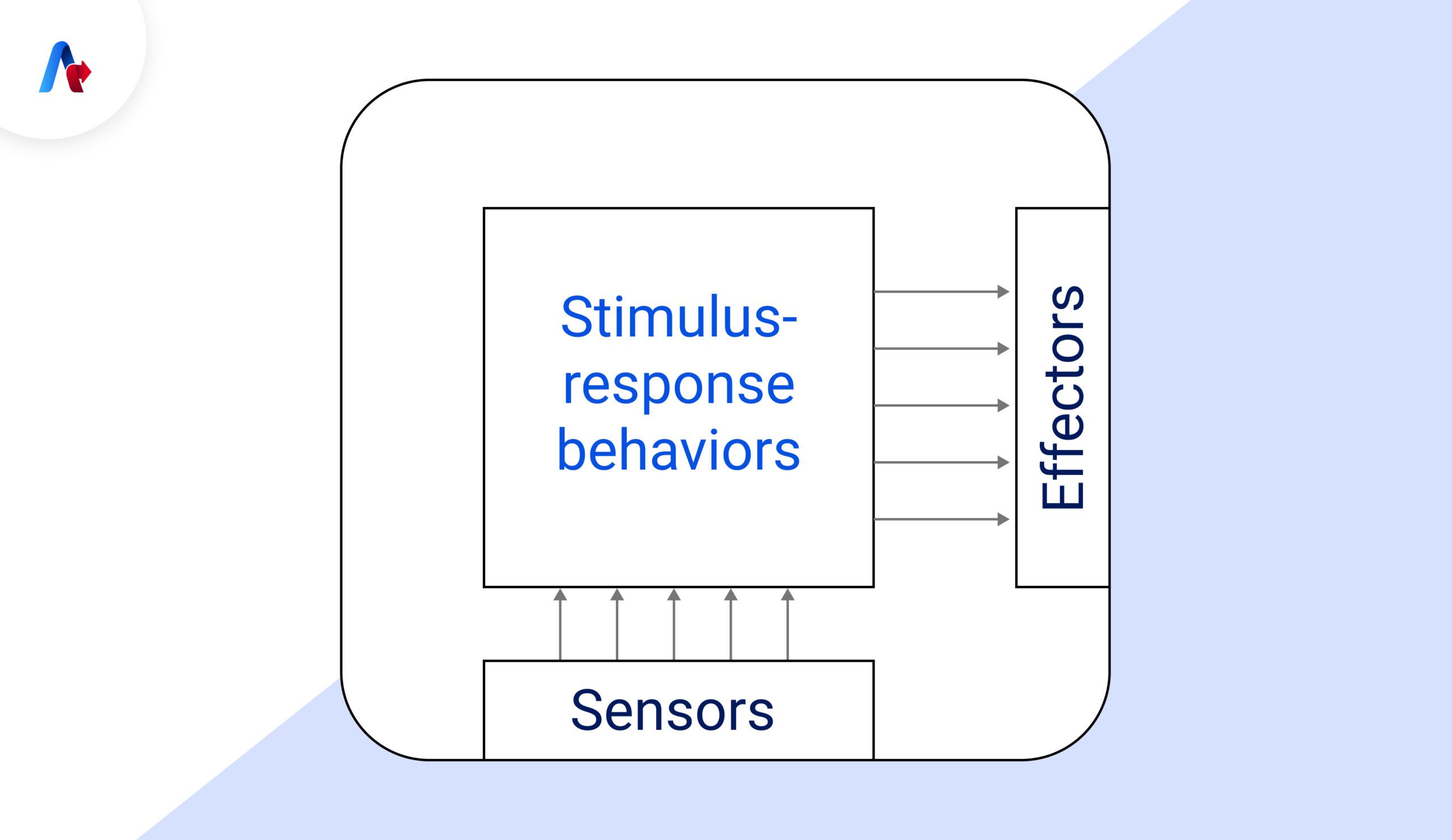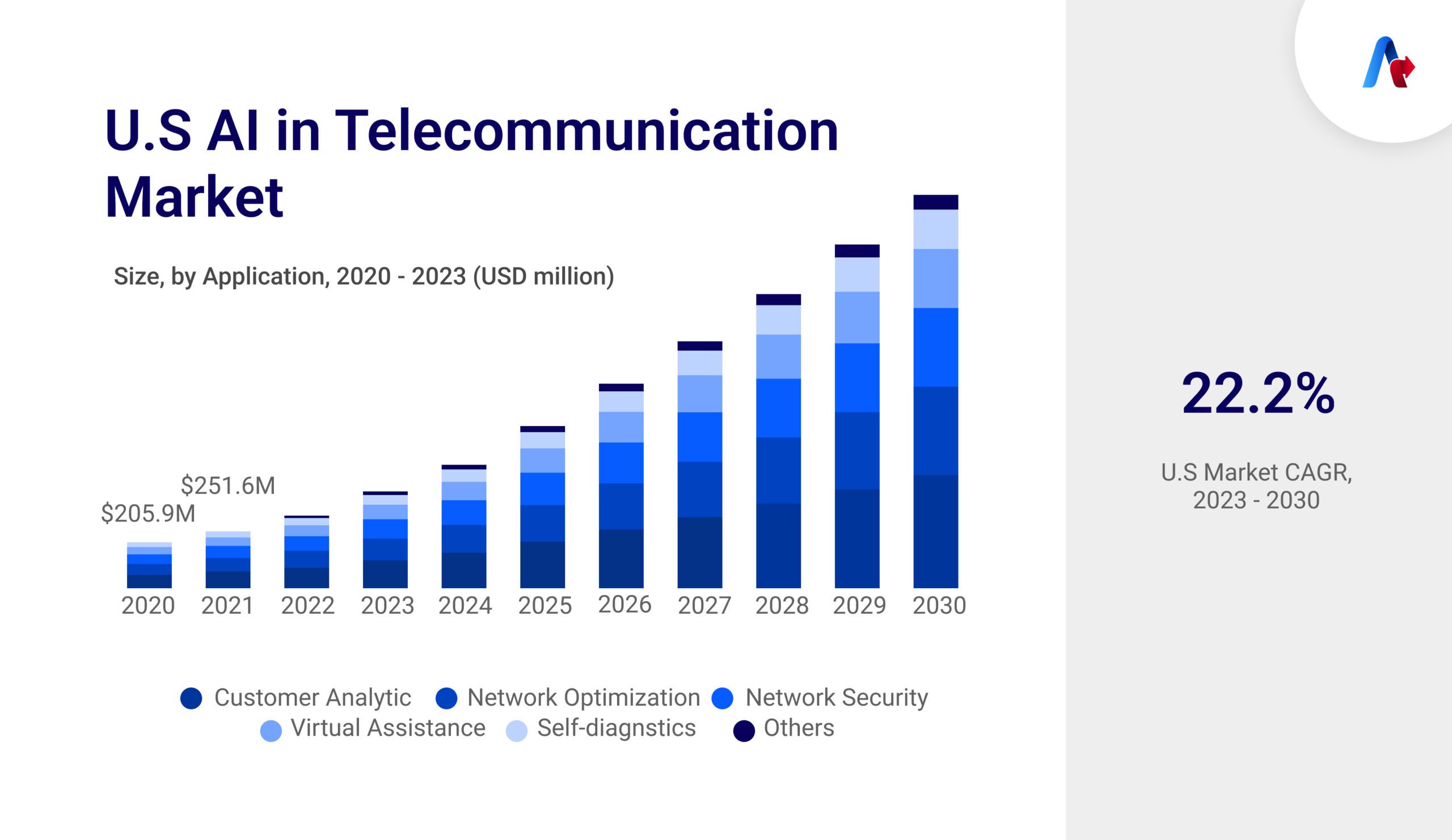Autonomous AI Agents
BLOG
12 min read
Autonomous Agents in Action: Multi-Industry Applications for the Future of Work
We would all agree that in today’s fast-paced world, human oversight alone cannot keep up. Traditional AI systems and manual processes are failing businesses when it comes to managing real-time data and responding quickly to unanticipated circumstances.
The root problem of this that various AI systems still rely on static rules and constant supervision.
Then how do companies overcome this? It is where autonomous agents play an important role. They can function autonomously, gain knowledge from past experiences, and make astute decisions in real-time without requiring continual human input.
Agentic AI companies are already deploying these in a variety of industries, including manufacturing, communications, healthcare, and finance, to handle tasks like factory optimization and fraud detection.
Explore in-depth about autonomous agent tools, types, benefits, and how industries are making the best use of them.
What is an Autonomous Agent?

An autonomous agent is a system driven by artificial intelligence that can decide and act on its own to accomplish predetermined goals. These agents work in dynamic settings, picking up knowledge from experiences and modifying their activities in response to data that is available in real-time.
Modern businesses trust autonomous agents and that is why 77% of workers completely trust autonomous futures. AI autonomous agents can cooperate with humans or other AI systems to perform tasks without continual supervision and self-improvement.

Difference Between Autonomous Agents and AI Agents
AI agents and autonomous agents both use artificial intelligence, but they differ in their characteristics.
| Feature | AI Agents | Autonomous Agents |
|---|---|---|
| Independence | AI Agents operate based on predefined rules and require human oversight. | Autonomous agents possess higher autonomy, learning and adapting to their environment. |
| Decision-Making | These follow programmed logic to execute tasks. | These analyze data, self-improve, and refine decision-making over time. |
| Adaptability | Limited ability to adjust to new data or environments. | Continuously evolve and optimize behavior based on interactions. |
| Human Intervention | AI Agents require frequent input and supervision. | Autonomous agents can function with minimal or no human intervention. |
| Use Cases | Chatbots, recommendation engines, and predictive analytics. | Autonomous robotics, automated trading, and AI-driven cybersecurity. |
Usually, AI agents work with preset rules and under human supervision, whereas autonomous AI agents, although they can learn from the surroundings, are more independent and require less guidance for their actions.
Related Read: What Are AI Agents: Capabilities & Real-World Uses
Key Capabilities of Autonomous Agents
Advanced capabilities allow autonomous agents to operate autonomously and streamline processes. Some of the key capabilities of autonomous AI agents are:
1. Self-Learning and Adaption
By LLM and machine learning algorithms, autonomous agents are capable of real-time data processing and analysis and improvement of their operating efficiency gradually. By learning from past interactions and focusing on the efficient execution of those tasks, they continuously upgrade their decision-making abilities through the acquisition of learning.
2. Decision-Making
These agents evaluate circumstances, forecast possible outcomes, and decide on their own using insights from data. They can make the best decisions without human assistance by examining patterns and contextual data.
3. Task Automation
AI autonomous agents are excellent at automating complicated, data-intensive, or repetitive processes, that lower manual labor costs and boost operational effectiveness. It reduces errors in everyday procedures and allows companies to concentrate on key activities.
4. Scalability
Autonomous agents are made to work in a variety of industries and scale operations with ease, managing high job volumes with little supervision. Even in growing commercial situations, their capacity for self-optimization guarantees steady performance.
5. Collaboration
To produce smart, integrated solutions, these agents collaborate with human teams, AI-driven systems, and other autonomous agent technologies. In multi-agent ecosystems, their efficient collaboration improves decision-making and speeds up activities.
6. Real-Time Adaptability
Autonomous agents can adapt their strategies and reactions in real-time to new information, challenges, and shifting environmental conditions. In dynamic work situations, their immediate adaptability guarantees efficiency and durability.
Different Types of Autonomous AI Agents
There are several types of autonomous AI agents, each with different levels of intelligence and autonomy that carry out specific tasks. These include:
Reactive Agents
These agents only act based on instant responses and current inputs. They are perfect for simple, rule-based jobs like automated customer service responses because they don't remember or learn from past events.

The image above represents the basic architecture of reactive agents.
Deliberative Agents
These agents plan a series of activities, forecast future states, and analyze circumstances using internal models. They do exceptionally well in circumstances involving sophisticated decision-making, such as supply chain optimization, where planning and reasoning are essential.
Hybrid Agents
Hybrid agents, merging the distinct advantages of deliberative agents and reactive agents, can at once take long-term goals into account and process real-time input swiftly. They are useful in dynamic environments such as autonomous vehicle driving and robotic applications.
Multi-Agent Systems
These involve a number of independent AI agents working together towards common goals. As in swarm robots or smart grids, each agent works autonomously but interacts with others to improve problem-solving.
Learning Agents
These agents improve their decision-making skills and learn from previous interactions by using machine learning techniques to change their behavior over time. They are extensively utilized in predictive maintenance and AI-powered financial analysis.
Utility-Based Agents
In order to maximize a particular objective, these agents consider various factors and make decisions based on utility functions. They are frequently used in digital marketing's automated bidding systems and AI-powered recommendation engines.
Applications of Autonomous Agents Across Various Industries
AI autonomous agents have a big impact on several industries as they automate procedures, enhancing judgment, and boosting productivity. Here is a look at the applications of autonomous agents in various industries:
1. Manufacturing
With the aid of autonomous agents, a manufacturing company can boost productivity while minimizing downtime through the automation of its repetitive processes such as inventory control, quality inspections, or predictive maintenance.
- Monitor real-time machine data for inefficiencies and improve operating methodologies on production.
- Preventive maintenance initiation can also minimize downtime since implementation can determine equipment breakdown beforehand.
- Automatically adjust the inventory in accordance with the provision of materials and the needs of production.
One great example of this can be seen in a renowned brand-BMW. To increase productivity and lessen physically taxing jobs for workers, BMW Group Plant Spartanburg tested Figure 02, a humanoid robot, to insert sheet metal parts in its manufacturing line. The test evaluates the capability of humanoid robots under actual industrial conditions as part of BMW's goal to incorporate cutting-edge robotics into its production processes.
2. Insurance
By intelligently automating fraud detection, underwriting, and claims processing, autonomous agents benefit the insurance sector. They facilitate quicker decision-making, lower manual mistake rates, and improve customer satisfaction by offering round-the-clock assistance.
- Automate the processing of claims, including damage assessment and document verification.
- Use pattern recognition and anomaly detection to find fraudulent patterns in claims.
- Provide individualized policy recommendations based on risk analysis and consumer behavior.
3. Telecom
By automating network monitoring, defect detection, and customer care tasks, autonomous agents help the telecom sector by guaranteeing quicker problem-solving and higher-quality services.

- Distribute bandwidth dynamically to guarantee peak network performance in a range of traffic scenarios.
- Use historical trends and real-time diagnostics to forecast and stop network disruptions.
- Use intelligent agents to automate customer support by tackling common problems and customizing solutions.
4. Finance
- Analyse consumer preferences and market trends to manage investment portfolios.
- Use behavioral analysis to identify fraudulent transactions in real-time.
- Create reports that are ready for an audit and keep an eye on transactions to ensure regulatory compliance.
For instance, at Accelirate, we deployed an RPA bot along with an AI agent to automate the extraction, comparison, and reconciliation of financial data across several systems. This solution reduced errors and ensured timely fiscal adjustments as well as generated a $65,000 return on investment and saved 3,650 hours per year.
5. Healthcare
By automating administrative duties like patient scheduling, medical billing, and medical record administration, autonomous agents help the healthcare sector by freeing up personnel to provide vital treatment. Using patient data, they also support personalized therapy suggestions and real-time diagnostics.
- Real-time analysis of patient data and medical research can help support clinical judgments.
- Automate administrative tasks like billing and appointment scheduling.
- Customize treatment regimens using predictive analytics and patient history.
Explore custom autonomous agent solutions for your industry.
Contact us todayBest Practices for Developing Autonomous AI Agents
Developing AI autonomous agents requires a step-by-step process. As autonomous agent experts, we have listed the steps below that allow businesses to make the best use of it.
- Define Clear Objectives- Clearly state your business issues that autonomous agents are intended to address, making sure that their development and implementation support quantifiable objectives like cost savings, operational effectiveness, or improved customer satisfaction.
- Evaluate Your Data Readiness- Clean, well-structured data is essential for autonomous AI agents to function successfully. Make sure you have up-to-date, important, and correct information by auditing your present data systems. Depending on your use case, this could comprise system logs, operational data, or consumer behavior.
- Choose Scalable Technologies- Choose autonomous agent tools that will support future growth in addition to meeting your present demands. Before choosing an autonomous agent tool, consider aspects like vendor dependability, training and implementation simplicity, and compatibility with current platforms.
- Ensure Seamless Integration- Your current digital ecosystem, including internal databases, CRMs, and ERPs, should incorporate autonomous agents. When systems are properly integrated, agents can work together and access contextual data to improve automation and decision-making.
- Prioritize User-Centric Design and Oversight- Whether the end users are customers or employees, concentrate on creating user-friendly interfaces that meet user expectations. Also, provide human intervention methods where needed, particularly for delicate activities requiring empathy or judgment.
Business Benefits of Implementing Autonomous Agents
There isn’t just one way that businesses can benefit from autonomous agents. Some major advantages include:
Increased Operational Efficiency
Businesses can reallocate human resources to more strategic, value-driven jobs by using autonomous agents to conduct repetitive, rule-based tasks at scale.
Cost Reduction
Automation of high-volume functions such as inventory management, data analysis, and customer service stands as a major strategy organizations can employ to minimize labor costs and operational overhead.
Better Decision-Making
With real-time data access and learning capabilities, AI autonomous agents can facilitate quicker and better-informed business decisions.
Enhanced Customer Experience
Autonomous agents increase customer satisfaction and loyalty by providing round-the-clock assistance, tailored interactions, and quicker responses. As per a report by Salesforce, one-third of customers would prefer to buy a product digitally or automatically (for example, using AI agents) compared to in person.
Scalability and Flexibility
Autonomous agent tools can be swiftly expanded across divisions and regions, responding to shifting business requirements without requiring corresponding expansions in human resources.
Want to integrate the right autonomous agents into your business?
Meet our AI agent expertsWhy Autonomous Agents Are the Future of AI
Autonomous agents LLM stand out as the next big development in AI as companies strive for smarter, leaner, and more flexible operations. Autonomous agent tools are perfect for complex, data-rich situations because they can think, learn, and act on their own, unlike traditional systems that need constant monitoring and user intervention.
Organizations can function more quickly, intelligently, and effectively thanks to their capacity to self-optimize, cooperate with both humans and robots and react to changes in real-time.
Autonomous agents are not just a passing trend—they represent the core of future-ready AI systems in a world where speed and adaptability are key to success. As organizations move toward more intelligent, self-directed technologies, Agentic Automation stands out as a critical enabler of scalable, responsive operations. At Accelirate, we guide businesses through every step of this journey—from identifying where autonomous agents can deliver the most value to implementing solutions that align with strategic goals—ensuring you're not just keeping up but staying ahead.
FAQs
Establish the goals for the autonomous agent, define logic for decision making, set it up with sensors and actuators, and finally implement AI algorithms for learning and adaptation.
Autonomous AI agents are systems capable of making decisions and acting independently without human intervention. Common examples include self-driving cars that navigate traffic, robotic vacuum cleaners that map and clean homes, virtual assistants like Siri or Alexa that respond to voice commands, and AI trading bots that analyze market trends and execute financial trades in real time. These agents use sensors, machine learning, and decision-making algorithms to operate efficiently in dynamic environments.
Autonomous AI agent is a fast-growing market and is projected to reach USD 103.28 billion by 2034, bringing several benefits for the businesses across various industries.
Automatic agents are programmed to follow predefined procedures while accomplishing tasks without ever really adapting their behavior to changes or learning from experiences. Autonomous agents take an independent decision for themselves and learn from their environment to modify the behavior over time.
These autonomous agents are AI systems relying on Large Language Models that perform tasks, make decisions, and adapt their working based on language inputs and contextual understanding. With little human interaction, they communicate naturally as they plan and execute complex workflows.


